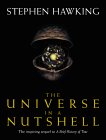Reviews and recommendations
'Mathematical reflections and vistas'First the executive summary: read these excellent books, and make sure all your friends and relations and bright pupils (if you are a teacher) or teachers (if a bright pupil) do so too. Mathematical Vistas (MV) is the sequel to the same authors' earlier Mathematical Reflections (MR). Each book is a series of explorations of mathematical topics, informed by a definite idea of what mathematics is, and how it should be taught.
'How long is a piece of string?'This book is by the same authors as "Why do buses come in threes?", which was reviewed in Issue 10 of Plus. Like its predecessor, it consists of entertaining and thoughtprovoking questions on topics not obviously related to maths, and a discussion of each. The authors say that "give us a topic that we care about, and we all become mathematicians", and set out to prove it.
'Fooled by randomness'If you watch a steam engine, you may not know how it works but you can soon get a fairly good idea of its behaviour, and you can predict its future behaviour accurately. Even though you don't understand its workings, you can see it's a pretty simple machine, so you can trust it to behave in a simple way: you have confidence in your predictions based on a short sample of its behaviour.
'Senior mathematical challenge'As Tony Gardiner says in at the beginning of this book, "the last ten years or so has seen a remarkable blossoming of public interest in mathematics [but] most of the books produced have been for adults, rather than for students. Moreover, most are in prose format - for those who want to 'read about' mathematics, rather than those who want to get their hands dirty solving problems."
'It must be beautiful'This book is built on an extended metaphor, which casts equations as the poetry of science. According to the editor Graham Farmelo (head of Science Communication at the Science Museum in London), great equations and great poems are alike in a number of ways. Both suffer if anything is added, changed, or taken away, both are a rich stimulus to the prepared imagination, and both draw much of their power from their conciseness.
'How to solve it'If "How to solve it" really contained an infallible recipe for doing so, mathematics would not be mathematics and the world would be quite different. Of course it doesn't - it can't - but it can - and does - contain a great deal of food for thought for the budding mathematician.
Like many other Central Europeans, Pólya relocated to the US at the beginning of the Second World War. There he worked at Stanford University and wrote this immensely successful book (more than a million copies sold) in 1945.
'Shadows of the Mind'This book attempts to take a firm grip on a corner of the slippery issue of consciousness. It is directly related to Roger Penrose's earlier, hugely successful work, The Emperor's New Mind. Although much space is devoted to painstaking replies to the criticisms made of the earlier book, this is not simply a sequel. It contains a number of new ideas, some of which are still being actively debated seven years after the book was first published.
'Our Cosmic Habitat'Research on the Universe leads to many such startling conclusions and this book attempts to describe some of the surprising phenomena which occupy astronomers and cosmologists.
Our Universe, Martin Rees' laboratory, allows its natural laws to be cleverly interpreted at arm's length, by observing the 'extreme' physics which we could never replicate in a laboratory. The biggest questions have an almost philosophical tenor.
'The Universe in a Nutshell'What is the nature of the universe that we live in? This is a question that has exercised philosophers and scientists for as long as people have been able to think. Almost everyone has asked it at one time or another, in one form or another. It is hard to imagine a more fundamental question.
'Black Holes and Time Warps'ver the last hundred years, human understanding of the nature of the universe has expanded at a mind-boggling rate; and over the last forty, Kip Thorne, along with Stephen Hawking, who wrote the foreword to this book, have been among the group of people shining most light into the darkness. But, aware that his research is carried out on behalf of us all, Thorne has not neglected the task of explaining its results to the rest of us.
'Life's other secret'Ever since Watson and Crick worked out the double helix structure of DNA in 1953, the role of genetics in biology has grown and grown. Genetic determinism - the belief that we are controlled by our genes and that no other factor is significant - is now all-pervasive.
Two books about mathematical thinkingOver the last decade, the discipline of neuropsychology has shed light on many aspects of human thought. Brain scans, carefully structured behavioural experiments, and the study of individuals who have suffered brain damage, have taught us much about which abilities are native to humans and which learned; which abilities can be lost and what happens when they are.











